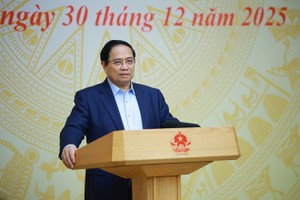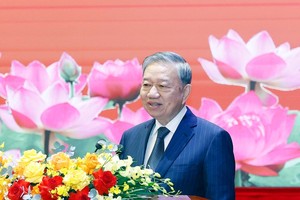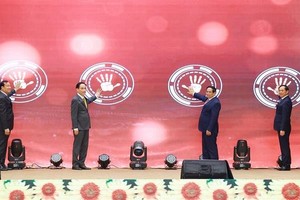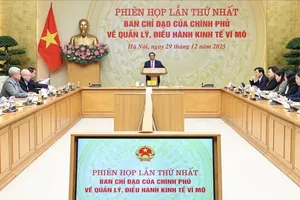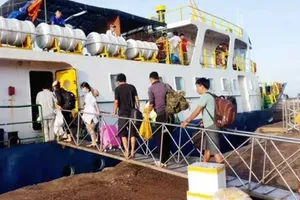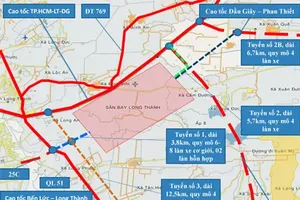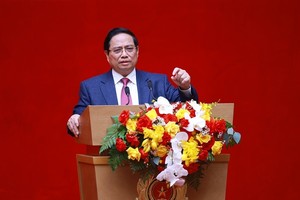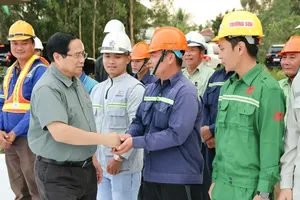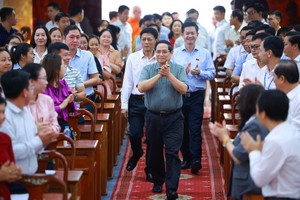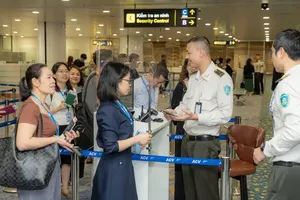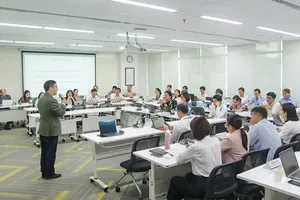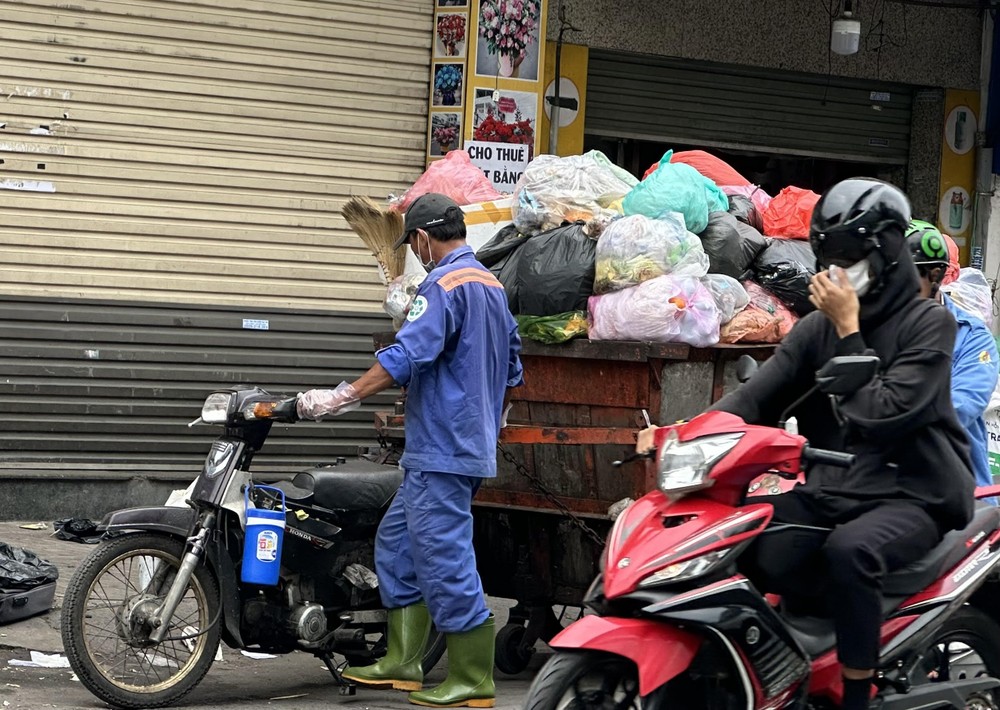
This approach, while seemingly addressing the immediate concern of ‘trash flooding’ is widely criticized as a crude and simplistic solution. It essentially involves gathering waste from various sources and consolidating it into a large pile, offering a temporary fix rather than a sustainable long-term strategy. The reliance on landfills merely postpones the environmental and public health challenges associated with extensive waste accumulation.
Since 2013, the initiative for waste separation at the source on Alley 25 Nguyen Binh Khiem in Saigon Ward has emerged as a model for Ho Chi Minh City. This site was chosen by the city, with assistance from the Japan International Cooperation Agency (JICA), to serve as a pilot project for waste separation.
Resident Bui Dieu Tam at 25/53 Nguyen Binh Khiem and the Head of the Front Work Committee of Neighborhood 1 in Saigon Ward recalled the public's early enthusiasm due to visible benefits and direct guidance from Japanese experts. However, she said, over time, the public's interest waned as their efforts seemed futile because after they sort the waste, collection workers would throw everything into a single bin. Subsequently, at the drop-off location, it was once again compacted into one truck for disposal.
To better understand Tam’s frustration, a reporter followed the collection process from households to the final disposal site in Cau Ong Lanh Ward of HCMC. On July 24, a male worker pushed a garbage cart with a large bag for recyclables along Tran Hung Dao Street, stopping at various bins to scavenge useful items and dump the rest. In just 15 minutes, his cart was full and taken to a staging area where a compactor truck awaited.
Soon, five more carts from nearby streets like Tran Dinh Xu and Ky Con arrived. After all carts had gathered, the compactor truck began its route heading to Tran Dinh Xu, turning into Nguyen Trai, then stopping at Nguyen Trai - Luong Huu Khanh intersection to compact 20 bins. The journey repeated at sites on Ham Nghi and Chu Manh Trinh streets.
After compressing over 30 bins, the truck proceeded straight to Da Phuoc Waste Treatment Complex at noon. With this process, it’s no surprise that the initiative to separate waste at source has stalled, and trash has continued to pile up into mountains. At Da Phuoc alone which is HCMC’s largest landfill since 2007, around 5,000 tons of waste are buried daily. The remainder is sent to the Northwest Solid Waste Treatment Zone in Cu Chi outlying district.
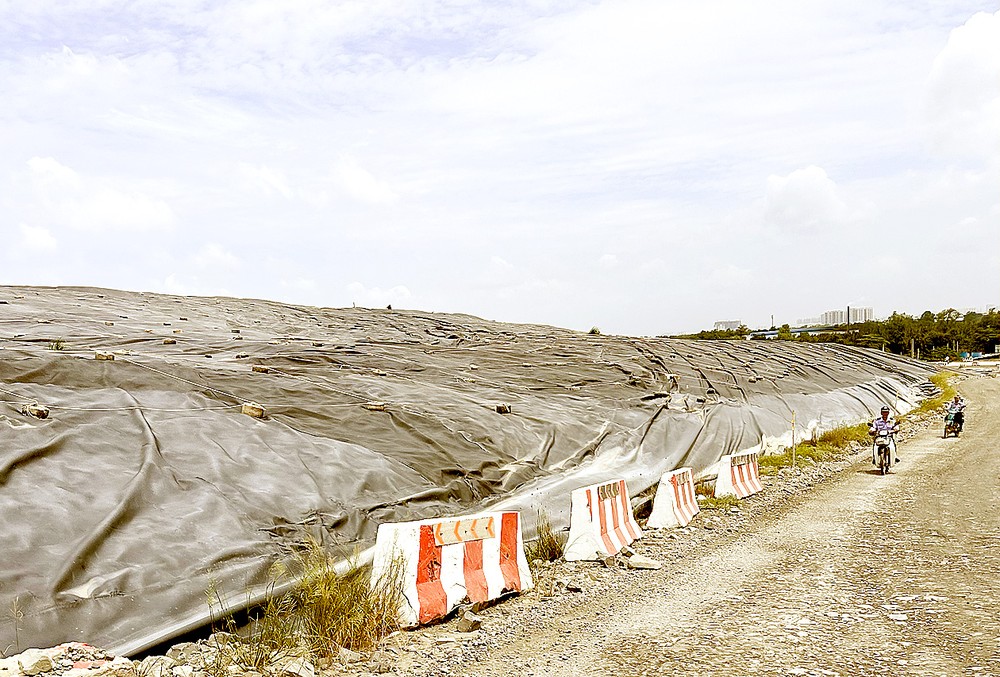
As a leading beach tourism location, Ba Ria - Vung Tau followed a similar approach. Though waste separation was practiced, the end result was still landfilling or dumping near the coast. Years ago, Tran Kim Le Thi’s family in Nguyen Hue Street of Con Dao special zone voluntarily sorted recyclables like cans and cardboard to sell. In 2021, when official waste separation policies rolled out, they became more systematic by sorting recyclables in orange bins while placing food scraps in green bins, general waste for evening pickup and hazardous waste (batteries, bulbs) stored in sealed containers for monthly collection.
Le Thi noted a clear reduction in non-recyclables and better use of organic waste. Head Le Mong Thuy of the Con Dao Public Works Management Board said that 42 sets of 3-color bins were distributed in residential areas with collection schedules. For instance, hazardous waste is collected every first day of the month while bulky waste including furniture, TVs, tree stumps on the same day, recyclables every Sunday afternoon. Organic waste is collected daily for composting at the nursery managed by the board.
After mastering source separation, in May 2023, the board and experts launched a composting model. Forty-two households and four restaurants in Neighborhood 5, Zone 1, piloted the project. Two training courses were held to teach composting kitchen waste. After a successful trial, the program expanded. Now, about 300kg of organic waste is collected daily from households for composting.
But what happens to the remaining waste? It is stockpiled at Bai Nhat. As of now, roughly 100,000 tons of exposed trash sit just 20 meters from the shoreline, and heavy rain risks leachate reaching the sea.
Long Son Commune stands as a leader in waste separation, showcasing the partnership among the State, businesses, citizens, and recyclers. Since August 2023, SCGC and Long Son Petrochemicals (LSP) have been offering training and capacity-building initiatives for local junkyard operators and recyclers. Numerous scrap facilities are now involved in the project, purchasing sorted waste from the community.
According to the Long Son Commune People’s Committee, by the end of July 2025, 43 percent of households and organizations practiced waste separation at source, and about 20 percent of food waste was composted.
Another notable initiative is the ‘Household Recyclable Waste Sorting’ program by the Women’s Union of Tam Thang Ward. Each month, neighborhoods in former Ward 7 collected over 3,000kg of recyclables, generating about VND1.8 million monthly. Over the past five years, proceeds funded over 300 health insurance cards for disadvantaged members, totaling nearly VND200 million.
In various wards and communes of the former Ba Ria - Vung Tau, the implementation of waste separation has seen differing levels of success. In contrast to Con Dao, the leftover waste is transported to the centralized waste treatment facility located in Toc Tien, Chau Pha Commune, where Kbec Vina Company manages its disposal in specified locations.


